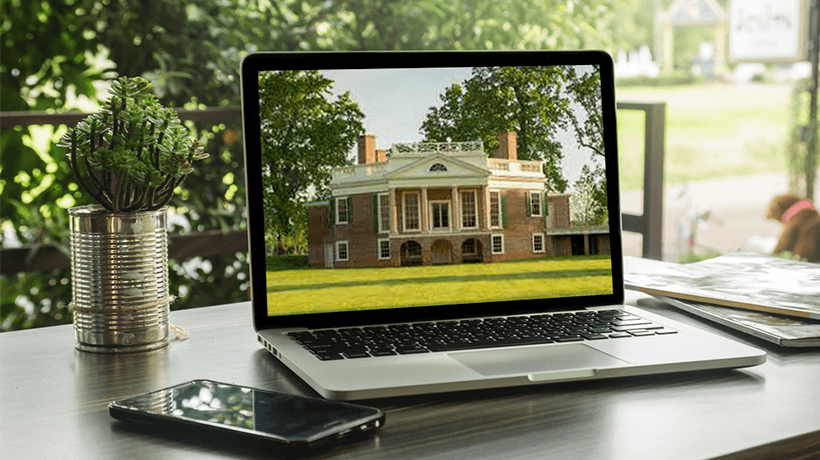The Importance Of Original eLearning Design
I often fear that Instructional Designers in eLearning too easily lose track of the importance of design in their work. The pressure to deliver content within a short deadline, with limited resources, and using sometimes limiting authoring tools, brings many of us to abandon the discipline of original eLearning design, and instead engage mainly in clerical activities aimed at transferring an existing body of material from one medium to another with the main goal to make the material compatible with online delivery through a Learning Management System. Whether the resulting training accomplishes anything significant is a nice (but not necessary) bonus.
Unfortunately, online learning is a unique experience, and just like other user-centered efforts, it must be designed to achieve a desired goal. Designers have been led to think they face a false binary choice: One either builds repetitive, boring, template-bound page-turners that are manageable to turn out quickly, or pursues highly creative, custom interactivity designs that are expensive, time-consuming, and difficult to design. I think this is a false choice, based a little bit on a misconception of the role of creativity in design.
The Art Of Instructional Design In eLearning
Instructional Design for eLearning is a craft in my view. That means that expertise is gained by combining a thorough understanding of the science of human learning and instruction with the art of creating an appealing human experience. Designing that experience depends on more than just mastery of the content; it requires an appreciation for the challenges faced by the user, the relevance of the content to the learner’s life and imagined success, and the emotional factors that may add or detract from the interest or appeal present in the learning opportunity.
Given exposure to an example of effective design, it is easy for aspiring designers to overestimate the degree to which these ideas sprung from the mind of a genius designer. In truth, the best eLearning designs I know of were directly inspired by another concrete example. A great designer is always building on ideas that have succeeded in the past, adjusting and customizing them to create a brand new experience that is uniquely impactful. If we could really own this idea of incremental improvement, we could begin to make more widespread strides in building a culture where memorable eLearning was viewed as the rule, rather than an oddity.
The Thomas Jefferson’s Retreat Experience
I was reminded of this recently on a sightseeing trip to Thomas Jefferson’s retreat near Lynchburg, VA, Poplar Forest. All the world knows of his famous house, Monticello (it was depicted on the backside of the nickel coin for many years), but Poplar Forest is the idyllic retreat he designed for himself a few years earlier. Jefferson holds a cherished place in the hearts of many Americans because of his writing, political leadership, and proponent for the ideals of democracy in the fledgling United States. He is also credited with a unique originality in his architecture designs for public and private buildings and inventions.
My tour guide offered an alternative perspective, though, that sort of upsets this idealistic view of Jefferson as a singular creative genius of immense originality. She pointed out, instead, that this very lovely building was designed almost entirely by observation of existing European buildings, extracting positive features, and combining them in a new way to suit a different environment. He looked back to Greek and Roman precedents as styles that elevated the significance of humanity. He took Classical features –the lunette windows, the symmetry, the columns, the proportions, the geometry– but recombined them to suit an American wilderness and enlightened democracy. His creativity did not spring from some ill-defined “imagination;” he was able to recognize valuable elements already present in his culture, but to push them to create something entirely new and uniquely impactful.
In doing so, the creativity partly expresses itself in maintaining a desired outcome but achieving it through the limited means at hand. A much admired feature of the Palladian villas Jefferson based many of his ideas on was the existence of symmetrical wings culminating in a pair of picturesque pavilions. Jefferson had neither the resources nor the space requirements to justify building actual wings and pavilions, but his analysis convinced him that they created an invaluable element in the experience he was trying to create. So his solution was to dig a sunken lawn and use the dirt to create two large mounds that he would plant with native shrubs to create the illusion of this refined villa in the eye of the beholder.
There are thousands of remaining examples of houses built in the first decade of the 19th Century. Many of them are based on Classical elements. Few of them provide a particularly impressive experience. We value them as historic reminders of what was typical of the period. Poplar Forest stands out uniquely in that it didn’t recreate something done before, but it created a home worth visiting and studying for how it is both ordinary and supremely fascinating at once.
How about if we as designers were to own a similar approach? We must be completely familiar with the styles and traditions in eLearning. But we must not take that knowledge as validation to simply recreate that which is familiar. Instead, we should identify approaches to interactivity and content that seem to create a positive result, extract the elements that create the value we prize, and then reshape (rather than recreate) a design that is incrementally better yet still achievable within the development and delivery constraints that guide us.









